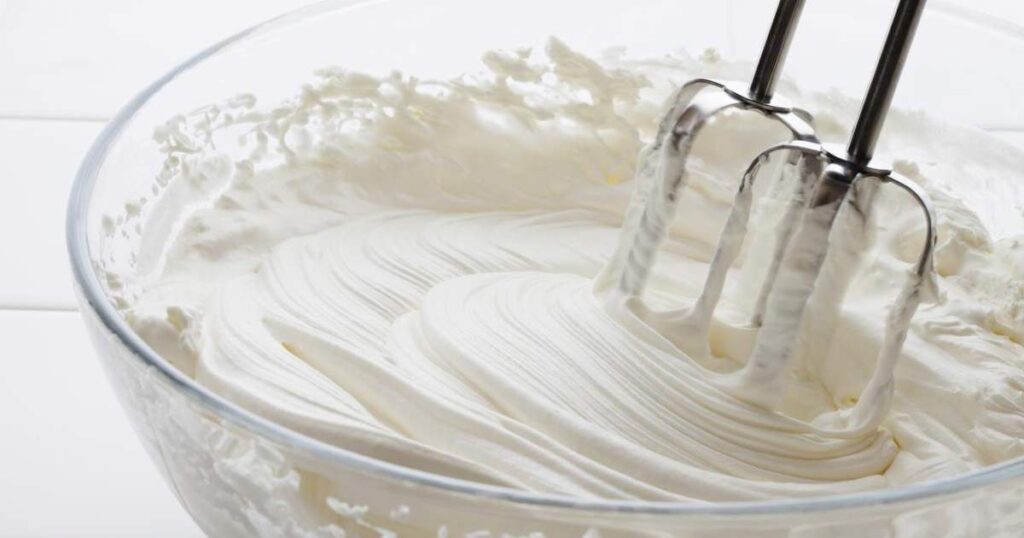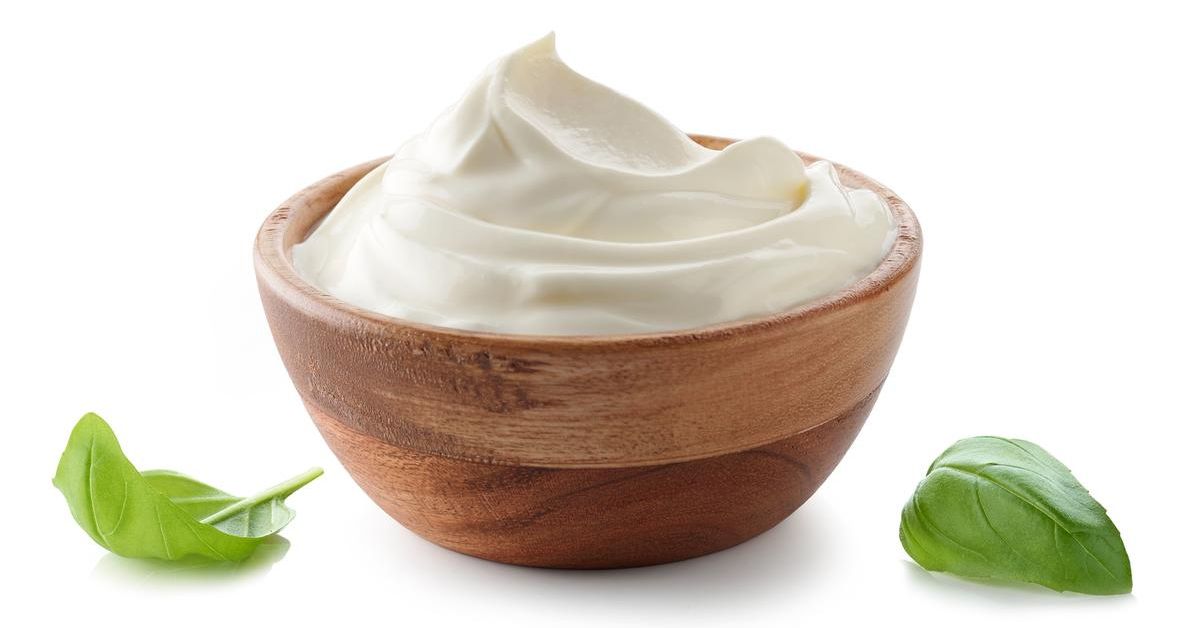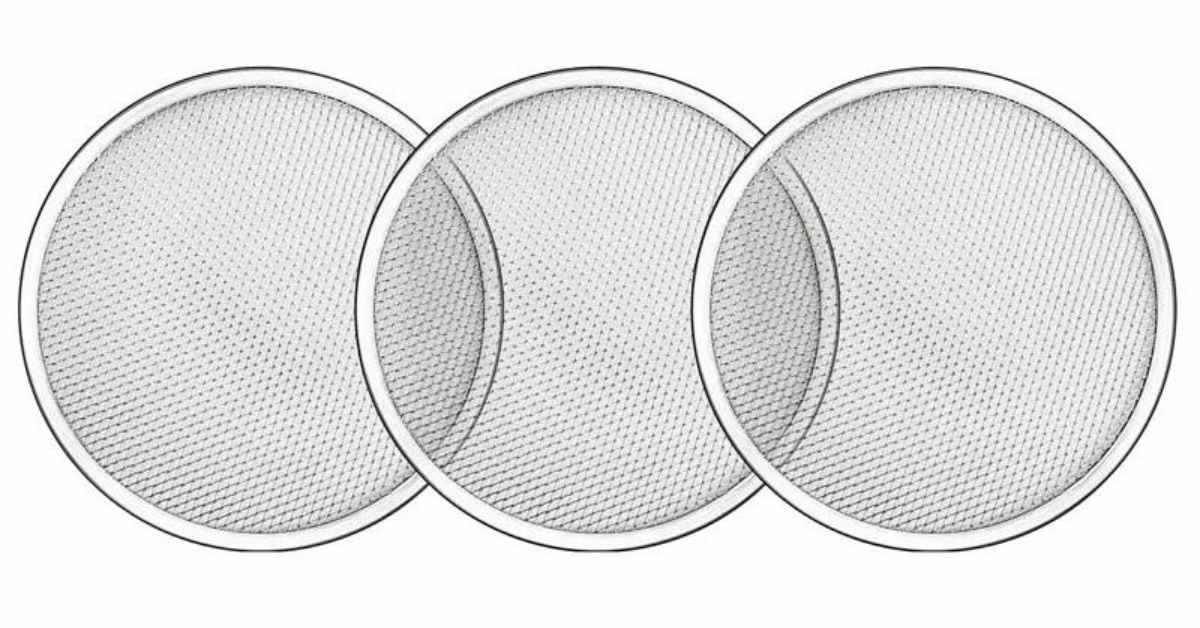Welcome to “The Ultimate Guide to Understanding What is Bitter Cream (2023).” You’ve come to the right place if you’ve ever wondered about this tangy and versatile dairy product. In this comprehensive guide, we’ll delve into the origins of bitter cream, its unique characteristics, how it is made, and its various culinary uses.
Whether you’re a seasoned cook or a curious food enthusiast, join us as we unravel the secrets behind this beloved ingredient. By the end of this guide, you’ll understand what bitter cream is and how it can elevate your dishes to new heights. So, let’s dive in and explore the world of sore cream together.
Table of Contents
ToggleUnderstanding the Basics of What is Bitter Cream
Bitter cream, also known as sour cream. It has a rich and tangy dairy product that adds a unique flavor and creamy texture to various dishes. But what exactly is bitter cream, and how does it differ from other dairy products? Let’s break it down.
At its core, bitter cream is made from fermented cream, which undergoes a natural souring process. This fermentation occurs due to the introduction of lactic acid bacteria, which convert the lactose in the cream into lactic acid. The presence of lactic acid gives bitter cream its characteristic tanginess and slightly sour taste.
Bitter cream has a smooth and velvety texture with a thicker consistency than regular cream. Its richness and tang make it a popular ingredient in savory and sweet recipes. While it shares similarities with other dairy products like sour cream, there are some critical differences between them.
One notable distinction is the fat content. Bitter cream typically contains a higher fat content than sour cream, contributing to its luxurious mouthfeel and creamy consistency. Additionally, the fermentation process in sore cream is often more prolonged than in sour cream, resulting in a more robust and distinct tanginess.
Understanding the basics of bitter cream sets the foundation for exploring its many culinary uses. From enhancing the flavors of savory dishes like tacos, baked potatoes, and stews to adding a creamy twist to desserts like cakes and pies, bitter cream is a versatile ingredient that can elevate various recipes.
Now that we’ve covered the fundamentals let’s delve deeper into the process of making bitter cream and uncover the secrets behind its creation.
How do You Make Bitter Cream at Home
If you’re adventurous and want to try making bitter cream from scratch, we’ve got you covered. You can create a homemade version that rivals store-bought options with just a few simple ingredients and patience. Here’s what you’ll need and the step-by-step process to make the perfect bitter cream:
Ingredients required:
- Heavy cream: 1 cup
- Buttermilk: 2 tablespoons
Step-by-step process to make bitter cream:
- Start by pouring the heavy cream into a clean, sterilized glass jar or container with a tight-fitting lid.
- Add the buttermilk to the jar, ensuring it is evenly distributed throughout the cream.
- Secure the lid on the jar and gently shake it to combine the ingredients thoroughly.
- Now, set the jar aside in a warm, undisturbed spot at room temperature.
- Allow the cream mixture to ferment for about 24 to 48 hours. The duration of fermentation will depend on the desired level of tanginess. Remember that a longer fermentation time will yield a more pronounced flavor.
- During fermentation, the cream thickens and develops a slightly sour aroma. This is a good sign that the fermentation is progressing.
- After the desired fermentation time has elapsed, gently shake the jar to check the consistency. The bitter cream should have thickened and obtained a tangy taste.
- Once you’re satisfied with the flavor and consistency, refrigerate the bitter cream for a few hours to chill and further solidify.
Tips for making the perfect bitter cream:
- Use high-quality heavy cream to achieve the best results.
- Ensure the glass jar or container is clean and sterilized to prevent unwanted bacteria from affecting the fermentation process.
- The temperature of the room plays a crucial role in the fermentation process. Aim for a temperature between 70°F to 75°F (21°C to 24°C) for optimal results.
- If you prefer a milder flavor, you can reduce the fermentation time accordingly.
- Homemade bitter cream can be stored in the refrigerator for up to one week. Be sure to check for any signs of spoilage before using.
Now that you know how to make your delicious bitter cream at home, you can enjoy the satisfaction of incorporating this homemade delight into your favorite recipes. Experiment with different fermentation times and variations to find the perfect balance of tanginess that suits your taste buds. So, roll up your sleeves and prepare to embark on a culinary adventure with homemade bitter cream!
Culinary Uses of Bitter Cream

Bitter cream is a versatile ingredient that can elevate a wide range of dishes with its creamy texture and tangy flavor. Let’s explore the various culinary uses of bitter cream and discover how it can add a delightful twist to your recipes:
Sauces and Dips:
Bitter cream is a fantastic base for creamy sauces and dips. It can be combined with herbs, spices, or citrus juices to create flavorful salad dressings or accompaniments for vegetables and grilled meats. It also serves delicious chips, crackers, and vegetable stick dip.
Toppings for Soups and Stews:
Adding a dollop of bitter cream to soups and stews can enhance their richness and provide a pleasant tang. It works particularly well with hearty and spicy dishes like chili, borscht, or tortilla soup, balancing the flavors and adding a creamy element.
Baked Goods:
Bitter cream can lend a moist and tender texture to baked goods. It can be incorporated into cake batters, muffins, and quick bread, resulting in a lovely crumb and subtle tang. It’s also an excellent addition to frostings and glazes, imparting a creamy and slightly tangy note.
Mexican and Tex-Mex Cuisine:
Bitter cream is a staple in Mexican and Tex-Mex dishes, adding a cooling and tangy element. It pairs perfectly with classics like tacos, enchiladas, and quesadillas, balancing the spiciness of salsas and adding a creamy contrast.
Dressings and Marinades:
Bitter cream can be transformed into creamy dressings and marinades with herbs, garlic, lemon juice, or vinegar. It works well as a marinade for chicken, fish, or vegetables, infusing them with a tangy flavor and helping to tenderize them.
Baking and Desserts:
Bitter cream can be a secret ingredient in various desserts, from cheesecakes and pies to ice creams and parfaits. Its creamy and tangy profile adds depth to sweet treats, creating a harmonious balance of flavors.
Garnish for Savory Dishes:
A dollop of bitter cream can serve as an appealing garnish for savory dishes, providing visual appeal and extra flavor. It works well with dishes like baked potatoes and nachos or as a finishing touch on a bowl of hearty chili.
These are just a few examples of how bitter cream can be incorporated into your culinary repertoire. Its versatility and unique taste makes it a valuable ingredient in savory and sweet applications. So, don’t hesitate to experiment and discover new ways to enjoy the creamy tanginess of bitter cream in your favorite dishes.
Nutritional Facts and Health Benefits of Bitter Cream
Bitter cream adds a creamy and tangy flavor to your dishes and offers several nutritional benefits. Let’s take a closer look at the nutritional facts and health benefits of this versatile dairy product:
Nutritional Facts:
- Bitter cream is a rich source of essential nutrients, including calcium, phosphorus, vitamin A, and vitamin D.
- It provides good protein, essential for tissue repair and muscle-building.
- Bitter cream is also a significant source of healthy fats, including saturated and monounsaturated fats, essential for energy and nutrient absorption.
- However, consuming bitter cream in moderation is vital due to its relatively high calorie and fat content.
Health Benefits:
Calcium and Bone Health: Bitter cream is a significant source of calcium, which plays a crucial role in maintaining healthy bones and teeth. Adequate calcium intake can help prevent conditions like osteoporosis and ensure proper bone development in children.
Probiotics: Fermented dairy products like bitter cream contain beneficial bacteria known as probiotics. These probiotics can contribute to a healthy gut microbiome, promoting digestion, nutrient absorption, and overall health.
Nutrient Absorption: The presence of fat in bitter cream helps absorb fat-soluble vitamins, such as vitamin A and vitamin D. These vitamins are essential for maintaining healthy vision, skin, and immune function.
Energy Source: Bitter cream’s high-fat content provides a concentrated energy source. It can be particularly beneficial for individuals with increased energy needs, such as athletes or those recovering from illness.
Flavor and Satiety: Bitter cream’s creamy texture and tangy taste can enhance the flavor and satisfaction of meals. This can help promote mindful eating, as smaller amounts of flavorful food can be more satisfying, potentially reducing the risk of overeating.
It’s worth noting that while bitter cream offers nutritional benefits, it is crucial to consume it in moderation and as part of a balanced diet. Due to its calorie and fat content, excessive consumption may contribute to weight gain or other health issues. Opting for low-fat or reduced-fat versions of bitter cream can be healthier if you watch your fat intake.
You can read also the following: The Great Debate: White Rice vs Fried Rice | (Explored 2023)
Bitter Cream vs. Other Creams

Regarding dairy products, various types of cream are available, each with unique characteristics. Let’s compare bitter cream with some other popular creams to understand the differences:
Bitter Cream vs. Whipped Cream
Bitter cream and whipped cream serve different purposes in recipes. Whipped cream is made by whipping heavy cream until it becomes light and fluffy, resulting in a sweet and airy dessert topping. On the other hand, bitter cream is thicker and tangier, commonly used as an ingredient in savory dishes or as a garnish.
Bitter Cream vs. Heavy Cream
Heavy cream, also known as heavy whipping cream, is a high-fat cream that contains about 36-40% milk fat. It adds richness and creaminess to various recipes, such as sauces, soups, and desserts. Bitter cream, while rich and creamy, has a tangy flavor due to the fermentation process, which sets it apart from heavy cream.
Bitter Cream vs. Crème Fraîche
Crème fraîche is a close relative of bitter cream but with some differences. Both are fermented creams, but crème fraîche has a milder tanginess than sore cream. Crème fraîche is commonly used in French cuisine and offers a velvety texture and subtle tang that enhances both sweet and savory dishes.
Bitter Cream vs. Clotted Cream
Clotted cream is a traditional British cream with a thick and velvety texture. It is made by heating full-fat cow’s milk and cooling it slowly, resulting in a thick layer of cream. Clotted cream has a rich buttery flavor, distinct from the tanginess of bitter cream.
How to Choose the Best Bitter Cream
When selecting bitter cream for your recipes, a few factors must be considered to ensure you choose the best option. Here are some tips to help you make an informed decision:
Read the Ingredients:
Start by reading the ingredient list on the packaging. Look for bitter cream that contains minimal and natural ingredients. Ideally, it should only list cream and bacterial cultures. Avoid products that have added stabilizers, thickeners, or artificial ingredients.
Fat Content:
Bitter cream comes in different fat percentages, ranging from 18% to 40%. The fat content affects the richness and creaminess of the product. Consider your recipes’ desired consistency and flavor when choosing the fat content. Higher fat percentages will provide a richer taste and creamier texture.
Freshness:
Check the expiration date on the packaging to ensure the bitter cream is fresh. Fresher products are more likely to have better flavor and quality. Additionally, inspect the container for any signs of damage or tampering before purchasing.
Brand Reputation:
Opt for reputable and trusted brands when selecting bitter cream. Brands with a history of producing high-quality dairy products are more likely to deliver consistent and flavorful options. Reading customer reviews and recommendations can also help guide your decision.
Organic or Grass-Fed Options:
Consider choosing organic or grass-fed bitter cream if you prioritize products from animals raised without antibiotics or hormones. These options offer a more sustainable and potentially higher-quality development.
Personal Taste Preferences:
Lastly, remember that taste is subjective. Experiment with different brands and fat percentages to find the bitter cream that best suits your palate and complements your recipes. Some brands may have a stronger tanginess or creamier texture, so explore and discover the one that appeals to your taste buds.
By considering these factors, you can choose the best bitter cream to enhance the flavor and texture of your culinary creations. Whether using it as an ingredient or a topping, selecting high-quality sore cream will elevate your dishes and ensure a delightful dining experience.
Frequently Asked Questions
Is bitter cream the same as buttermilk?
No, bitter cream and buttermilk are not the same. Sore cream is a fermented dairy product that combines heavy cream with bacterial cultures, resulting in a tangy and creamy product. Buttermilk, on the other hand, is the liquid left over after churning butter. It has a slightly sour taste and thinner consistency compared to bitter cream.
Can you freeze bitter cream?
While it is possible to freeze bitter cream, it may undergo changes in texture and consistency upon thawing. Freezing can cause separation and graininess, resulting in a less desirable texture. It is generally recommended to use fresh bitter cream for the best taste and quality.
How long does bitter cream last in the fridge?
The shelf life of bitter cream depends on various factors, including the production process and storage conditions. Unopened sore cream can last 1 to 2 weeks in the refrigerator. Once opened, it is best to consume it within 5 to 7 days for optimal freshness and quality. Always check the expiration date on the packaging and follow the storage instructions provided by the manufacturer.
What is bitter cream used for?
Bitter cream is a versatile ingredient that finds its way into numerous culinary creations. It is commonly used as a topping for baked potatoes, tacos, nachos, and soups. Bitter cream can also be incorporated into sauces, dips, dressings, and desserts, adding a creamy texture and tangy flavor to enhance the dish’s overall taste.
Is Double cream bitter?
Double cream is not bitter by nature. It is a rich and indulgent cream with high-fat content, ranging from 48% to 55%. Double cream has a luxurious, creamy taste and is often used in desserts, sauces, and decadent recipes to add richness and smoothness.
Can you make bitter cream with low-fat milk?
No, making bitter cream with low-fat milk alone is impossible. Sore cream requires a higher fat content to achieve its characteristic texture and taste. The fermentation process relies on the fat in the cream to develop a tangy flavor and creamy consistency. Using low-fat milk would yield different results.
Conclusion
In conclusion, bitter cream is a versatile dairy product that adds a tangy and creamy element to various dishes. From savory sauces and dips to baked goods and desserts, sore cream can elevate the flavor and texture of your culinary creations. It is essential to choose high-quality bitter cream, considering ingredients, fat content, freshness, and brand reputation.
While not the same as buttermilk, bitter cream has unique characteristics and culinary uses. It is best to consume fresh sore cream within its recommended shelf life and to avoid freezing it for optimal taste and texture. Incorporating bitter cream into your recipes can enhance the dining experience with its delightful tanginess and creamy goodness.






